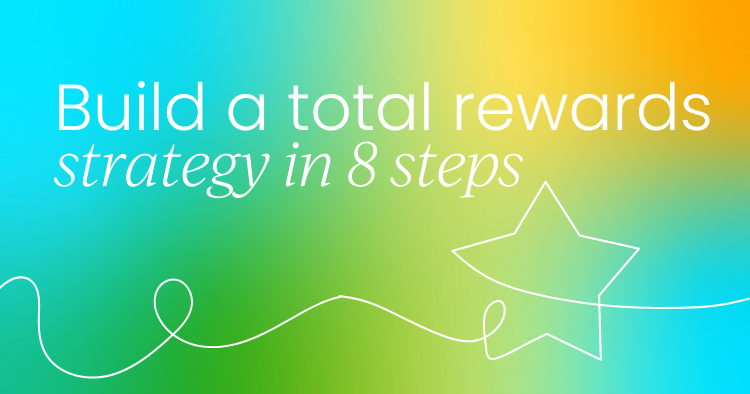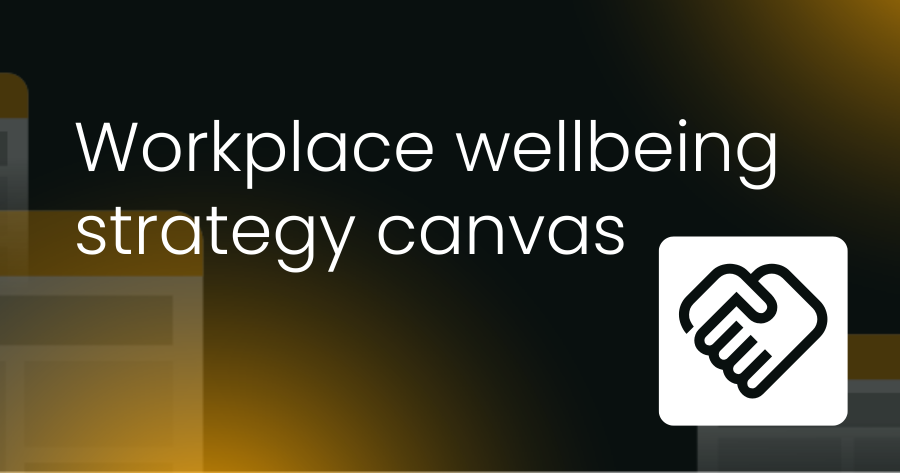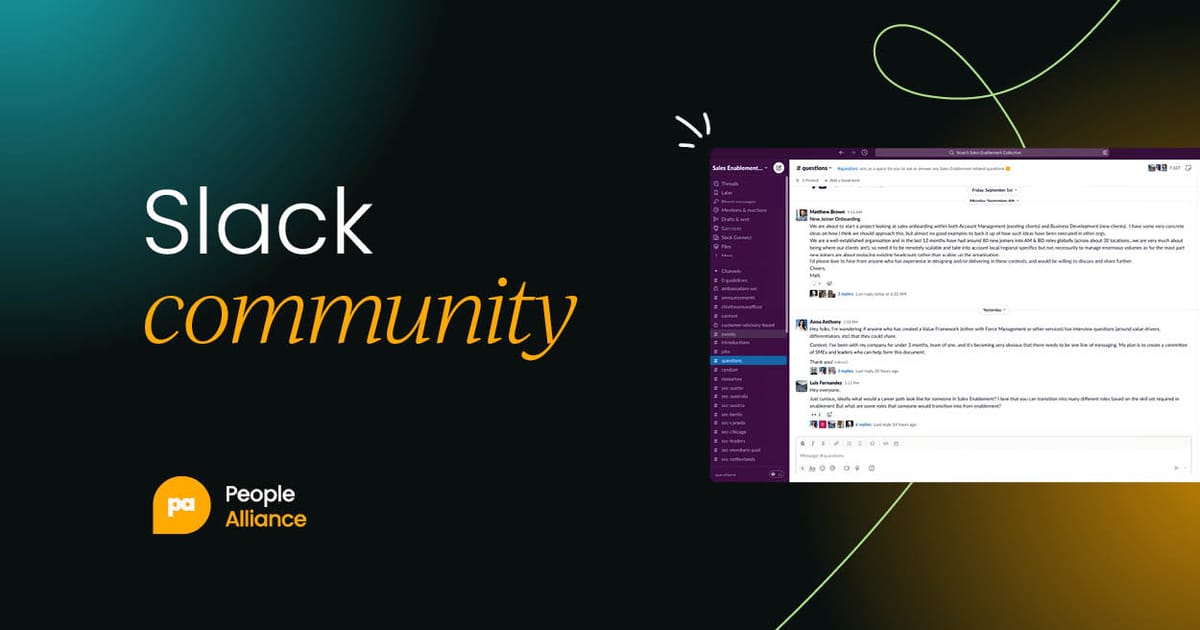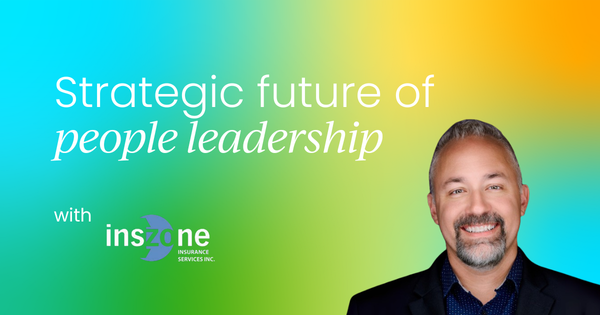I didn’t grow up thinking I’d be in HR or insurance. Most people don’t. You fall into steady industries because they’re hiring, they’re reliable, and they offer a great living. That was my story.
I spent a decade in Palmdale, California, working for NASA in emergency services; security, police, and safety protection for their facilities. On paper, the job looked administrative.
In reality, it turned into HR, day after day. One afternoon it hit me: all I do is HR. I leaned in, picked up certifications, and never looked back.
That turn wasn’t plotted on a whiteboard. It was the result of doing the work right in front of me and paying attention to what I was actually doing well.
If people could always get along, I joke that I’d be out of a job. But they can’t and don’t, and that’s why HR is always needed.
My dad had a line that stuck with me from early on in my career: no job is hard; people make it hard. He wasn’t being cynical, he was being honest. The work itself is rarely impossible. The human part is what makes or breaks the day.
Careers aren’t linear, so learning can’t stop
I’ve been in HR around twenty-five years now, and the biggest mistake I made early was treating education like a finish line. I wrapped my bachelor’s and master’s, felt completely burned out, and told myself I was done with “learning” for a while.
For nearly a decade I skipped certifications, conferences, and courses. I picked up a lot on the job, but I wasn’t actively sharpening the saw.
I later found myself consulting alongside people who were still taking certs, joining groups, attending webinars, and staying competitive well into their forties and fifties, it was a wake-up call. I realized I’d been sitting still while the market kept moving.
That’s also why I talk with students whenever I can. For example, I went to UC Irvine to meet HR and business students about how to look at the job market and actually get out there and apply.
The advice is simple: don’t obsess about whether your degree lines up perfectly with your future. Finish it if you’re going to college, get real experience, and build strong connections. The people you meet often matter as much as the coursework.
Your career will probably shift more times than you can predict, and those shifts can be the best things that happen to you if you’re willing to keep learning instead of clinging to a plan.
And speaking of learning and adapting, there’s a quote out there that makes the rounds because it’s true: “AI won’t take your job, but someone using it might”. Sure, in a place like Amazon, a robot might literally take a role, and in some settings it already has.
For the rest of us, AI isn’t a replacement; it’s a force multiplier. It helps you source information quickly, structure it cleanly, and move faster from research to results. I’ve been in this industry for a long time and still look up half the things people ask me.
That’s not a lack of knowledge, that’s the reality of modern work. Whether you use AI or a search engine, the process is the same: do your research, assemble what’s relevant, and build something that works for your organization.

Inszone’s growth and what it taught me about modern HR
Today I serve as Chief Human Resources Officer at Inszone Insurance Services in Anaheim, California. We’re around 900 people and grew by almost 500 last year alone.
Rapid growth teaches you what really matters in HR. The traditional pillars (pay, benefits, and compliance) still matter. They always will. But the context around them has changed.
Teams are distributed, even inside companies that brought people back in after COVID. I’ve watched three colleagues in the same building hop on the same video call from separate offices because that’s the habit we all built.
At the same time, companies are recruiting wherever the best people live. Like sports, the team with the best players wins, so you figure out hybrid and remote later because you don’t pass on a key player just because they’re in Florida and you’re not.
That shift puts pressure on leadership to manage, train, facilitate, and track performance in ways that actually work across distance. It’s not enough to have a dashboard. You need rhythms. Training has to travel. Coaching has to scale. KPIs need context.
The job moved from just “own the HR fundamentals” to “teach managers how to lead in rooms and on screens,” and the difference shows up in retention.
Stop promoting the best individual contributor and calling it leadership
One of the worst habits companies fall into, especially when they’re scaling fast, is promoting the best doer and assuming they’ll be the best manager. Bob might be the best seller or the top technician. That doesn’t mean he knows how to motivate, coach, schedule, or resolve conflict.
When companies grow fast, promotions stack up, and the training doesn’t keep pace. We make someone a manager and assume they’ve “got it” because their old numbers were great. Then they struggle, their team struggles, and culture takes a hit.
I spent six years as a consultant before joining Inszone, and I kept seeing the same pattern. Companies that don’t invest in training and developing their managers fall behind, even when they have the right products and the right market. It’s not glamorous work.
It’s weekly huddles, clear expectations, and constant feedback. But the results are night and day.

Why culture became a business line item, not a buzzword
Thirty years ago, nobody was talking about “company culture”. Today they are, and for good reason. It costs real money when culture is mediocre, and it costs a fortune when it’s bad. You see it in lawsuits, EEO (Equal Employment Opportunities) claims, workers’ comp, and, most visibly, in turnover.
The research has been clear for years: when people are treated poorly, those costs climb. If you want the short version, here it is: treat people well because it’s the right thing to do, but also because it’s the most cost-effective way to build a resilient company.
There’s another reason culture matters more now: it’s public. Social media made every workplace searchable. People can share their experiences anonymously.
Potential employees will see it before they interview. So will customers, and the younger they are, the more they weigh values and treatment in their buying decisions. I’ve heard folks say they avoid buying from brands whose workplaces they don’t respect.
That’s not a fringe view anymore.
Culture becomes brand the moment you talk about it out loud
Watch the leaders who use social well (e.g., Gary Vaynerchuk, Richard Branson) and you’ll see how culture and brand can become the same thing. Inszone has leaned into this over the last couple of years, and the difference is huge.
You don’t need a massive budget to do it. You already have the raw material: work anniversaries, birthdays, employees of the month, sales leaders, service leaders, safety awards, charity days, new hires, promotions, retirements. You take a photo, write two short paragraphs about why that person matters, get their permission, and share it internally and externally.
That simple rhythm changes the way people feel and the way the market sees you. Inside the company, employees feel appreciated and understand what behaviors get celebrated. Outside the company, candidates say, “I want to work there,” because they can see how people are treated. It’s also free recruitment and free retention.
And one more thing happens that leaders don’t always anticipate: you get repeat behavior. When you explain publicly why someone was recognized, you’re training the entire organization on what “great” looks like, and people repeat it.
The operating rhythm that actually reduces turnover
If a company brings me in and says, “We have a retention problem,” I start by getting leadership to face the real cost. The conversation is a lot clearer when you know how many people left last year and what they were paid.
In the U.S., a common rule of thumb says turnover costs run somewhere between twelve and eighteen months of salary per person once you add recruiting, ramp, lost productivity, and institutional knowledge.
Multiply that by the number of exits and even skeptical leaders sit up straight. When they see the dollar amount, they’re ready to do the work.
From there, the rhythm is straightforward. I’ve used it across more than 120 companies with consistent results. Every quarter, the whole company gathers for forty-five minutes.
You celebrate people, explain what you accomplished, admit where you fell short, and clarify where you’re going and how you’ll get there together. If you can’t give your people forty-five minutes a quarter to align the business, nothing else I recommend will matter.
Every week, each team meets for about twenty minutes. You check in like humans (“how was the weekend”) then look back at last week’s commitments and forward to what’s on deck. You figure out who needs help and who’s providing it. That cadence is free and priceless at the same time.
And then you teach managers formally. A six-month series works well: compact sessions on communication, conflict resolution, change management, coaching, and the basics of performance management, including how to document properly. None of that content is exotic.
A lot of it lives on my site or a dozen others. What matters is that it actually happens and that managers practice it in real situations.
Last, you make appreciation public and consistent, inside and outside the walls. Employees see it, candidates see it, customers see it. That’s how culture and brand fuse.
How to handle the high-performing jerk without losing the team
Every company eventually faces the same person, a top performer who leaves a wake of damage. The worst possible move is to tolerate it. When you do, you tell everyone else, “This behavior is fine as long as the numbers are good,” and your best people start planning their exit.
The conversation isn’t complicated, but it has to be honest.
Start by acknowledging the results they’re getting, then name the behaviors that aren’t acceptable (talking down to people, shutting down ideas, pushing folks around) and say plainly that those behaviors don’t work for a leader here.
Offer tools to do better. Give them structure for meetings that invite voices. Role-play the tough conversations. And then document the discussion with a clear follow-up email that thanks them for what they’re doing well, restates what needs to change, and offers support.
The book Radical Candor makes the case well: avoiding hard conversations isn’t kindness; it’s negligence. People deserve the truth so they can change. If they won’t, you’ll have the documentation you need to act.
Distributed work demands over-communication
One thing leaders underestimate is how much information doesn’t “trickle down.” The higher you go, the more context you have, and it’s easy to assume everyone else has it too. They don’t.
That’s why the quarterly all-hands and weekly team huddles are non-negotiable. In a distributed world, you need platforms that push clarity down and pull feedback up.
Slack messages and ad-hoc updates aren’t enough because people miss meetings, miss messages, and miss context. Rituals are the guardrails.
Why people really leave and what keeps them
Most people don’t leave companies; they leave managers. If your pay is fair and your manager treats you with respect, you’re not refreshing job boards every night.
But if you’re devalued or disrespected, you are. It’s that simple. There’s also a math reality at play. In the U.S., the average tenure sits around 3.9 years. The average annual raise is roughly three percent. When people switch jobs, they often see an average jump of about 17.8%.
Smart, ambitious employees who are skilling up will change roles every few years because the math works. The question for employers isn’t “How do we stop all attrition?” It’s “How do we earn more great years from great people than our competitors?”
You do it with better managers, clearer growth paths, and cultures where people are treated well and can do their best work.
The blockers that sink good intentions
I’ve seen well-planned culture programs fail for two predictable reasons.
First, leadership denial. If decision-makers don’t believe turnover is expensive, they won’t prioritize the fixes. That’s why the cost conversation is step one.
Second, the protected performer who doesn’t want a mirror held up to their behavior. When you shine light on values and feedback, that person often resists the loudest. You can’t build a strong culture while you quietly excuse the person everyone’s afraid of.
Once those two blockers are addressed, momentum takes over. Recognition posts start small and then spread. Someone shares a team barbecue, someone else shares a community event, and before long the company’s social feeds are a living record of what it feels like to work there.

Scaling people for the company you’re becoming
The hardest part of hypergrowth is that yesterday’s A-player at a 1,000-person company might not have the skills to be an A-player in a 10,000-person company yet. That isn’t a character flaw; it’s a development gap.
Your job in people leadership is to close it as fast as possible. This is why companies pay big money to bring in someone who’s “done it before.”
But you should also be building the bench you already have. Train them. Give them the next-size problems. Mentor them. And accept that some will still leave for bigger stages. That’s okay.
If you trained them well, they’ll talk well about you on the way out, and the people they influenced will be better than they would’ve been otherwise.
A people-powered strategy in practice
When I think about what actually moves the needle, it comes back to a handful of habits practiced consistently.
Leaders aligning the company at least quarterly and telling the truth about where you are.
Managers gathering their teams weekly so priorities and support are clear. HR and leadership teaching managers the human skills that make work work.
Companies appreciating people in public so the culture you say you value is visible, repeatable, and attractive to both employees and candidates.
And everyone (leaders, managers, and individual contributors) treating learning as a daily practice, not a phase that ends when the diploma arrives.
I’ve been fortunate to see this play out across many organizations, including our own. I’ve also seen what happens when we punt the hard parts.
The difference shows up in the stories people tell about their work, the way they show up to meetings, and the way the market responds when your brand becomes a reflection of how you treat people.
This article is based on a podcast interview with Matt, which you can watch in full here.
Join our Slack community of people leaders to connect with your peers and grow your network, get answers to your burning questions, find your next opportunity on our career channel, and so much more.




 Follow us on LinkedIn
Follow us on LinkedIn




